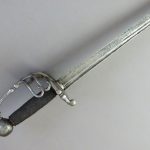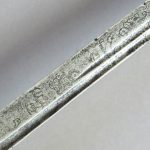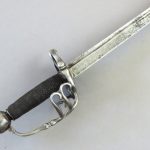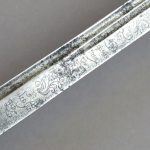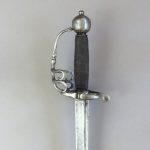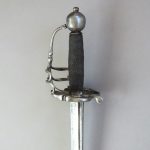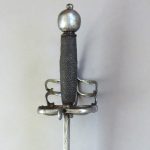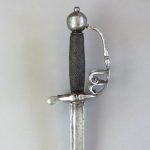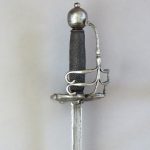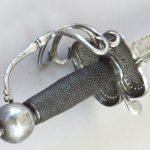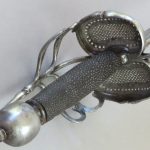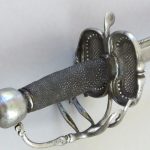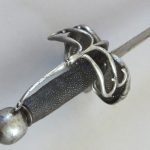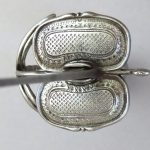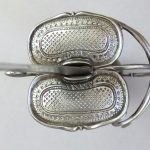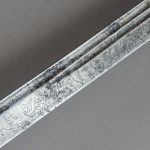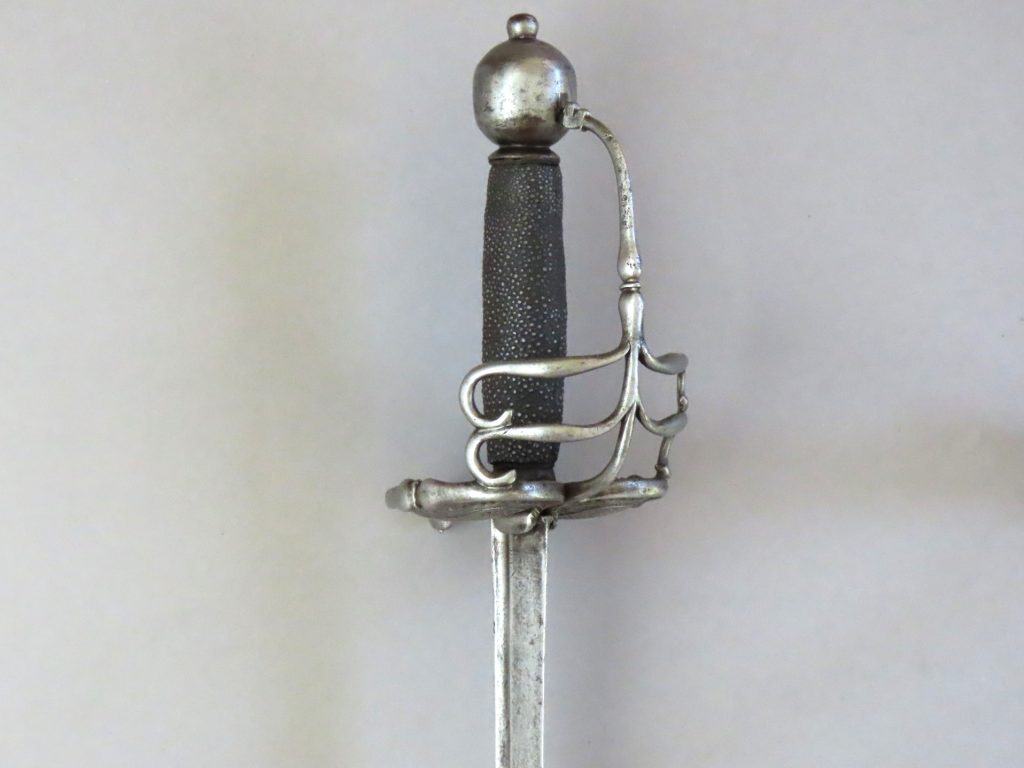
An English Walloon Hilted Cavalry Sword dating to the Mid to Late 17th Century.
To enquire about this itemplease click here
Price: £2,875
Ref: AA.096.22
Item Description
English Walloon Swords were mainly produced from the second to the fourth quarters of the 17th century. The pierced guard plates which are typical of the hilt design were influenced by earlier developments in Europe, which were combined with the features of existing English sword styles, to create this unique form of English hilt. English Walloons are quite scarce today.
English Walloons provided a stylish alternative to the other sword patterns that were in use throughout the English Civil War period, the Restoration period, and in the battles fought during the Glorious Revolution of 1688 when James II was deposed. Most usually these are cavalry swords mounted with single edged blades. However, some were double edged, and the hilts of some surviving contemporary English rapiers were also clearly influenced by the Walloon style.
The hilt is made up of slender rounded bars built upon a sturdy quillon block. The cross bar is extended at the rear to form a drooping wristguard terminating with a flat swollen downward facing nippled knop. To the front, the quillon is extended into a knuckle bow, the flat grooved terminal of which is tucked into an aperture located at the front lower part of the pommel. Robust oval ring guards are mounted on each side of the cross bar, each with decorative bisected swellings in the outer middle. Each ring is filled with a slightly downwardly convex plate, intricately engraved with concentric oval designs and pierced with designs of circle and diamond shapes.
The knucklebow has a swollen feature to the middle, similar to those on the side rings. Two subsidiary scrolled bars emanate from the knucklebow on each side from below this swelling and attach to the ring guards to strengthen the hilt structure. The hilt floor has a raised platform on the inside which supports the grip and integral rounded langets emanate from the cross guard below on each side of the blade. The stylistic influence of contemporary English “Mortuary” hilts on these features is quite marked. The globular pommel has an integral raised button on top and a flared neck beneath. The baluster shaped wooden grip is covered with shagreen.
The single edged blade has a deep fuller running underneath the back edge on both sides for four fifths of its length after which is is double edged to the tip. A second fuller commences 6 inches (15 cm) from the hilt and runs under the first to terminate four inches (10 cm) from the tip. The blade is lightly engraved with floral panels on both sides and in separate places with two Latin inscriptions. One reads “Solideo Gloria” (Glory to God alone) whilst the other is unclear.
The overall length is 39.75 inches (101 cm) and the blade is 32.5 inches (82.5 cm) long. Overall the sword is in fairly good condition although the grip cover is replaced. There are small shallow patches of old blackened rust and pitting in places on the hilt and blade which do not detract from the overall attractiveness and elegance of the sword. The blade has a number of nicks to the front cutting edge.
For further information on English Walloon swords, and similar examples, see Stuart C Mowbray, “British Military Swords – Volume One: 1600 to 1660”, Mowbray Publishing, 2013, pages 246 to 254.
See also for further discussion, Cyril Mazansky, British Basket Hilted Swords, Boydell Press 2005, Chapter 11, pages 281 to 284. The swords are described as “Hilts based on pierced side rings”.


